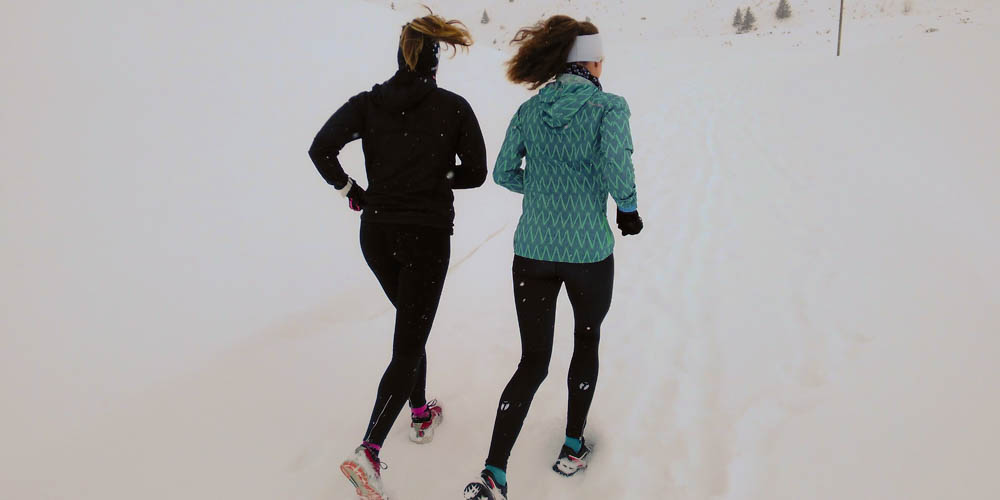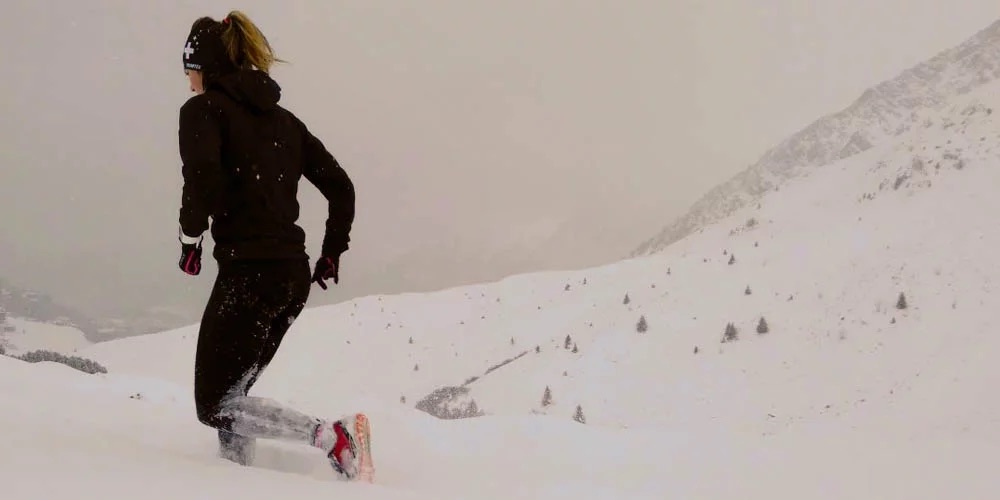Hello, Winter Wonderland! Do you feel a chill in your heart just at the idea of running in winter? Don’t worry, with the right tips you can get on well with winter training too. We show you how to not only survive the cold, but also enjoy your workout. The cold season is the perfect opportunity to strengthen both body and mind for the coming season.
Controlled breathing in frosty temperatures
In winter, our airways are often irritated. Dry indoor heating air and cold outdoor air pose a challenge to our immune system. When running in low temperatures, it is advisable to breathe through the nose. This warms and cleans the air. If you need to breathe through your mouth, a scarf or cloth in front of your mouth is a good idea.
Warming up is mandatory
Your warm-up routine is more critical than ever when running in the cold. Give your muscles and lungs the time they need to get going. This is essential, especially in interval training or during a race. So, plan for a longer warm-up.
Clothing according to the layering principle
Too much clothing can often be counterproductive in winter running. Stick to the layering principle: one layer for moisture transport, an insulating layer, and a protective layer against wind and moisture. Don’t forget a hat and gloves, as well as protection for your Achilles tendons. After the run, quickly change into dry clothes to avoid energy loss. And consider visibility in the dark – reflective clothing and headlamps are a must!

Choose the right surface
Fresh snow can be fun but also strenuous. Adjust your running intensity accordingly. Caution is advised on icy and slippery surfaces. In such cases, consider whether a treadmill would be a safer alternative.

Adjust training duration and intensity
In very cold temperatures, shorten your training sessions and reduce the intensity or move them indoors. In the running.COACH training plan, both intensity and duration can be adjusted with the “minus” sign. Good warm-up and slow running with cautious load increase are especially important in cold temperatures.
Alternative training
If the weather is too harsh, alternative training such as swimming, aqua jogging, cross-country skiing, or snowshoeing is a great way to stay active. Here is an overview of effective winter alternative training.
Don’t neglect nutrition
Adequate fluid intake is crucial even in winter. Don’t forget to drink enough after training and replenish your energy with a snack. For longer runs, make sure to have enough snacks with you.
The benefits of winter training
- Defy winter blues with physical activity
- Discover new training possibilities
- Burn extra calories and keep winter pounds in check
- Boost your immune system
- Strengthen your mental resilience
So, grab your running shoes and face the cold! Get ready for your strongest season 😉

